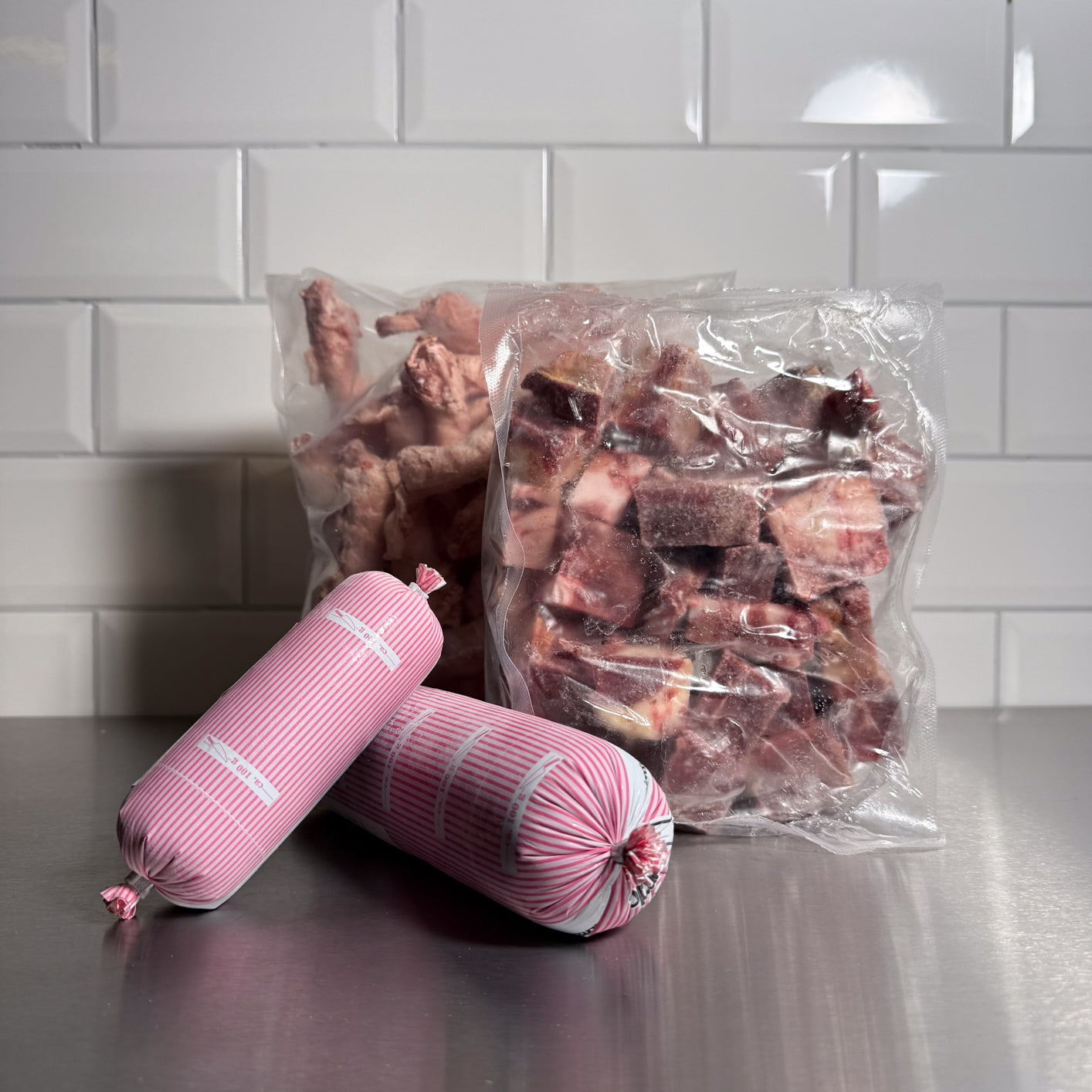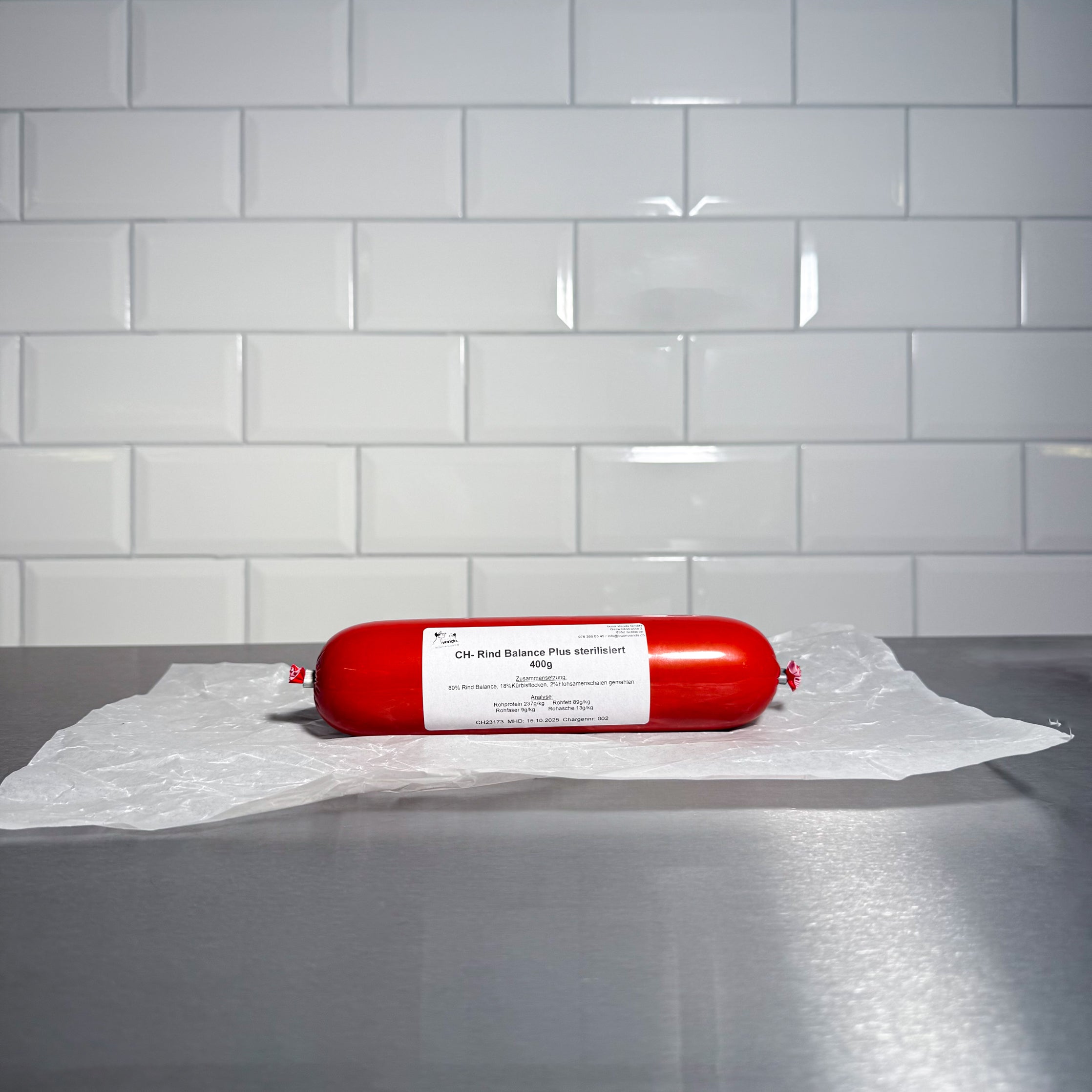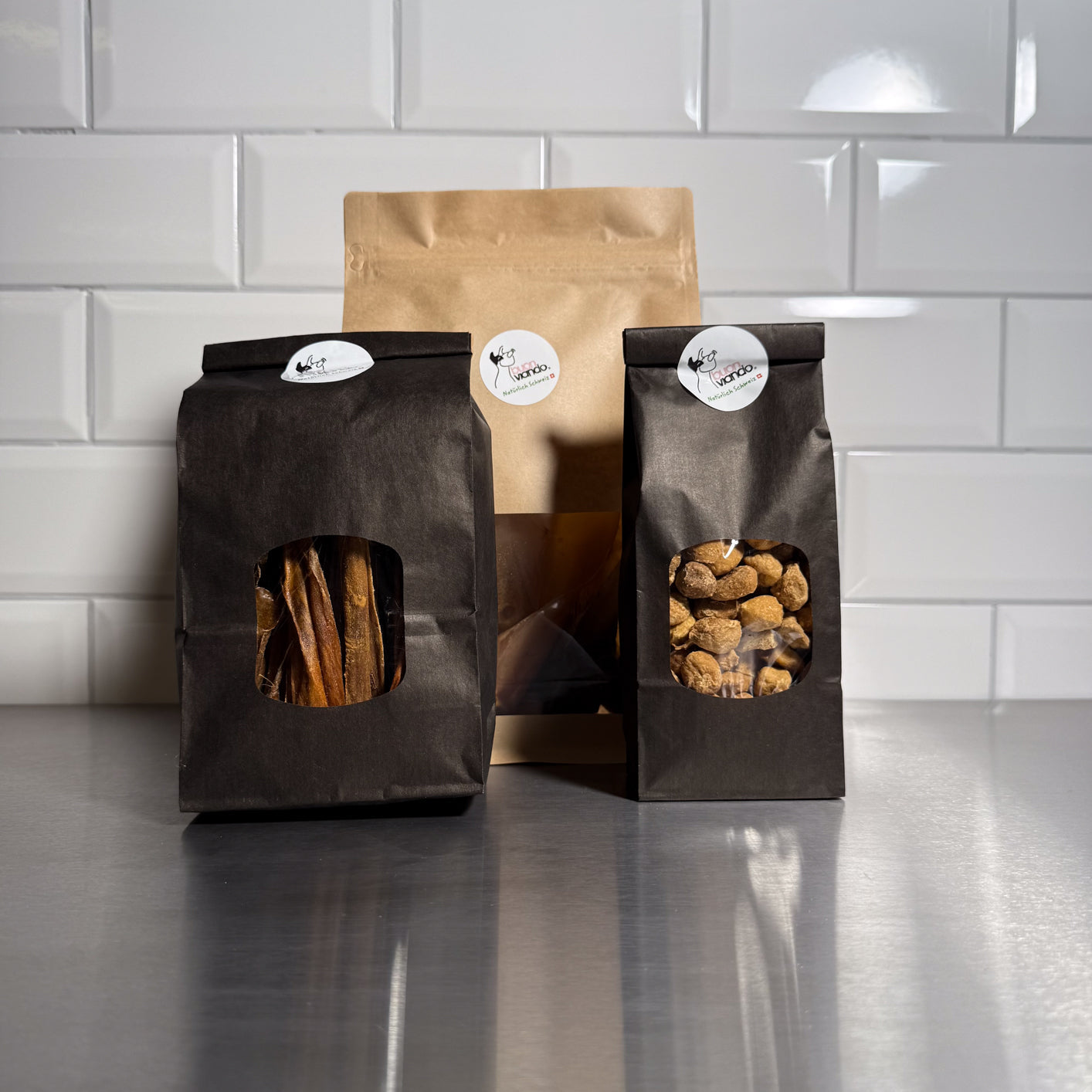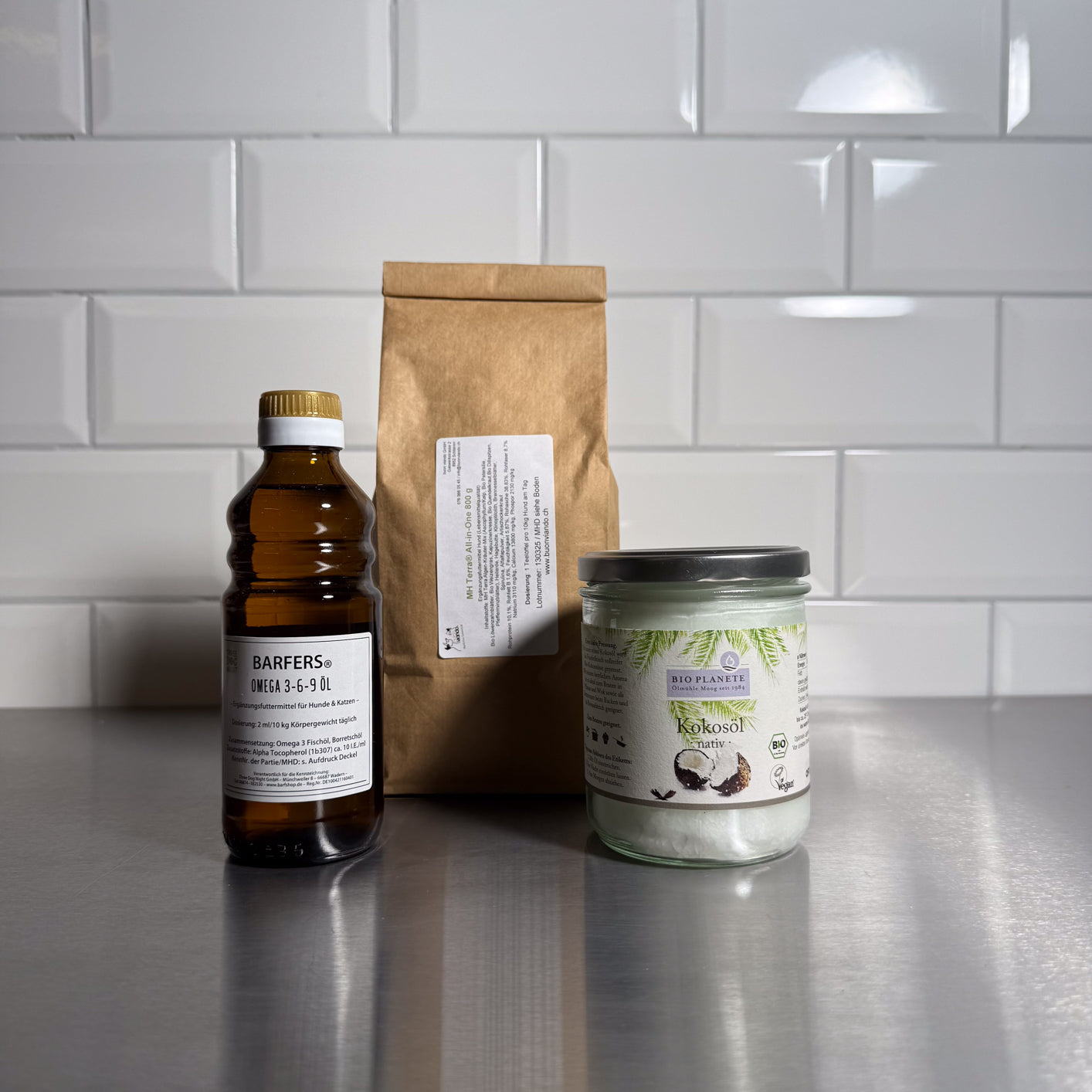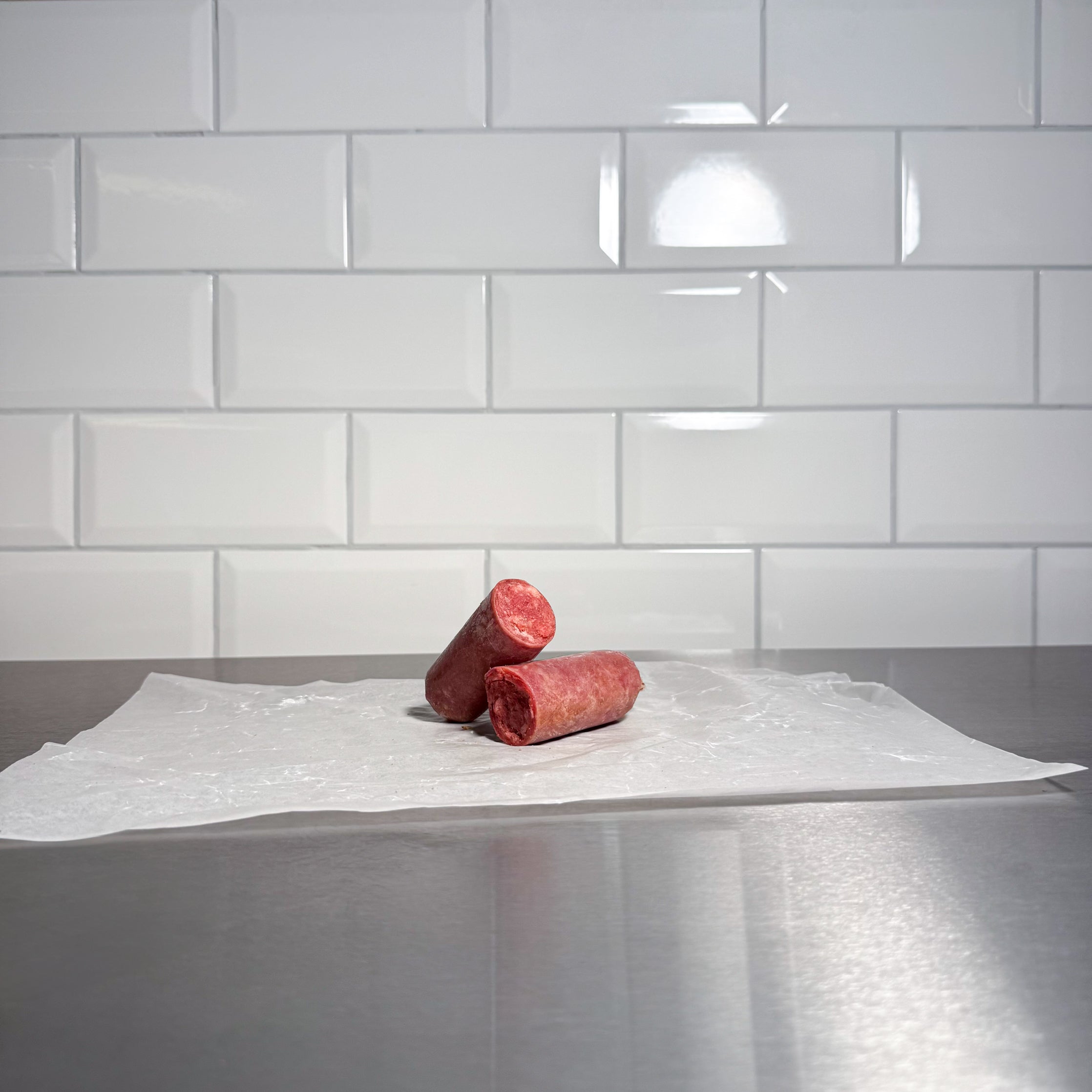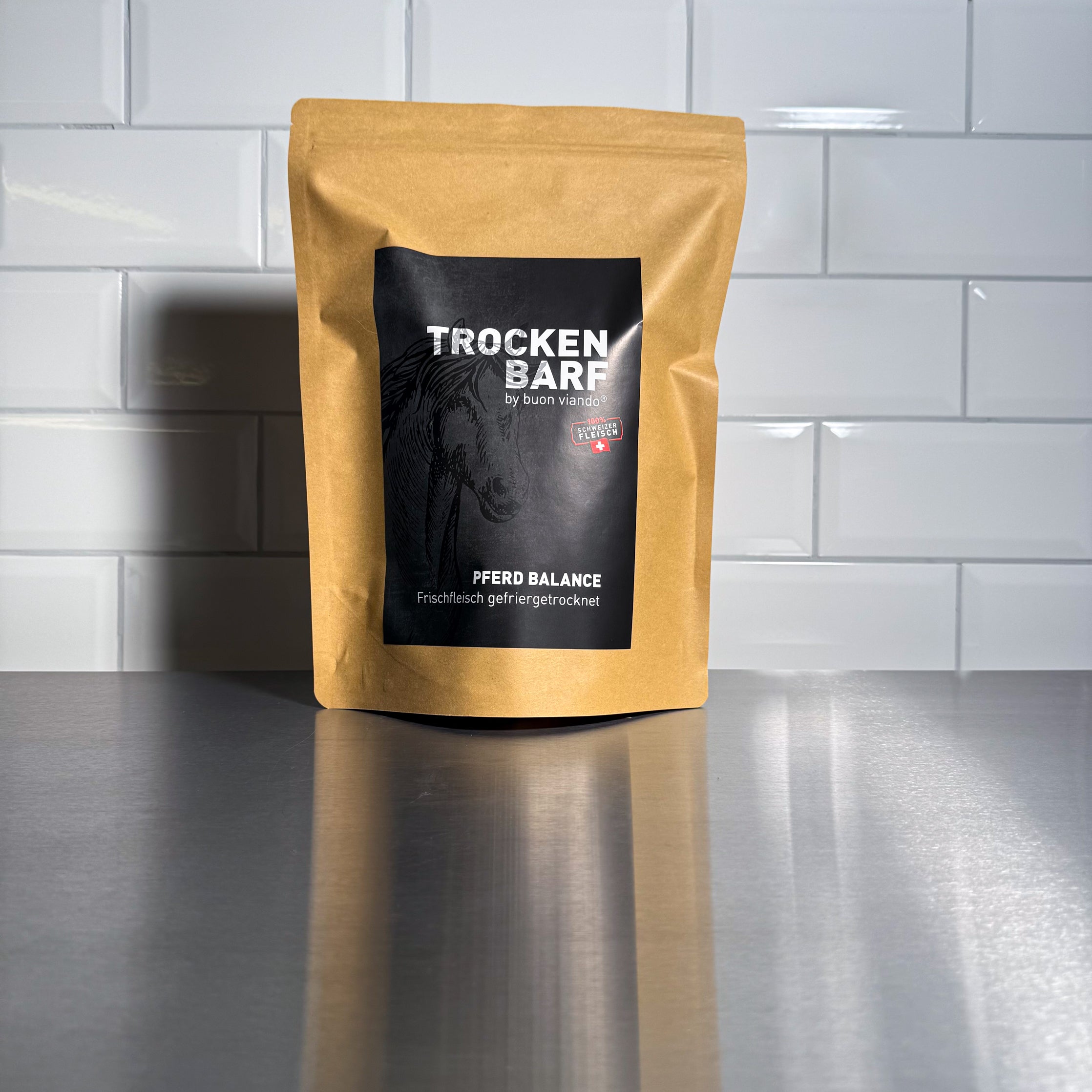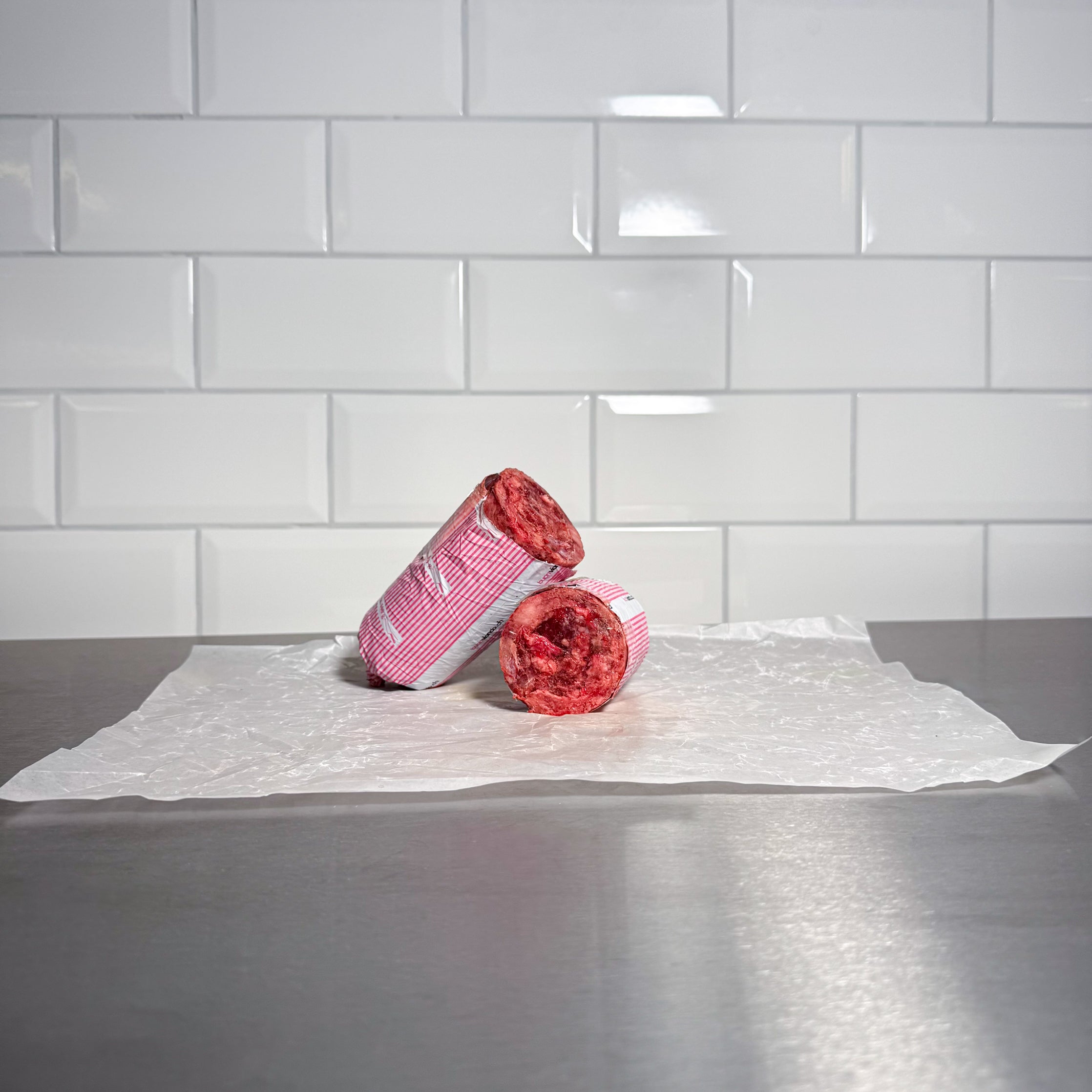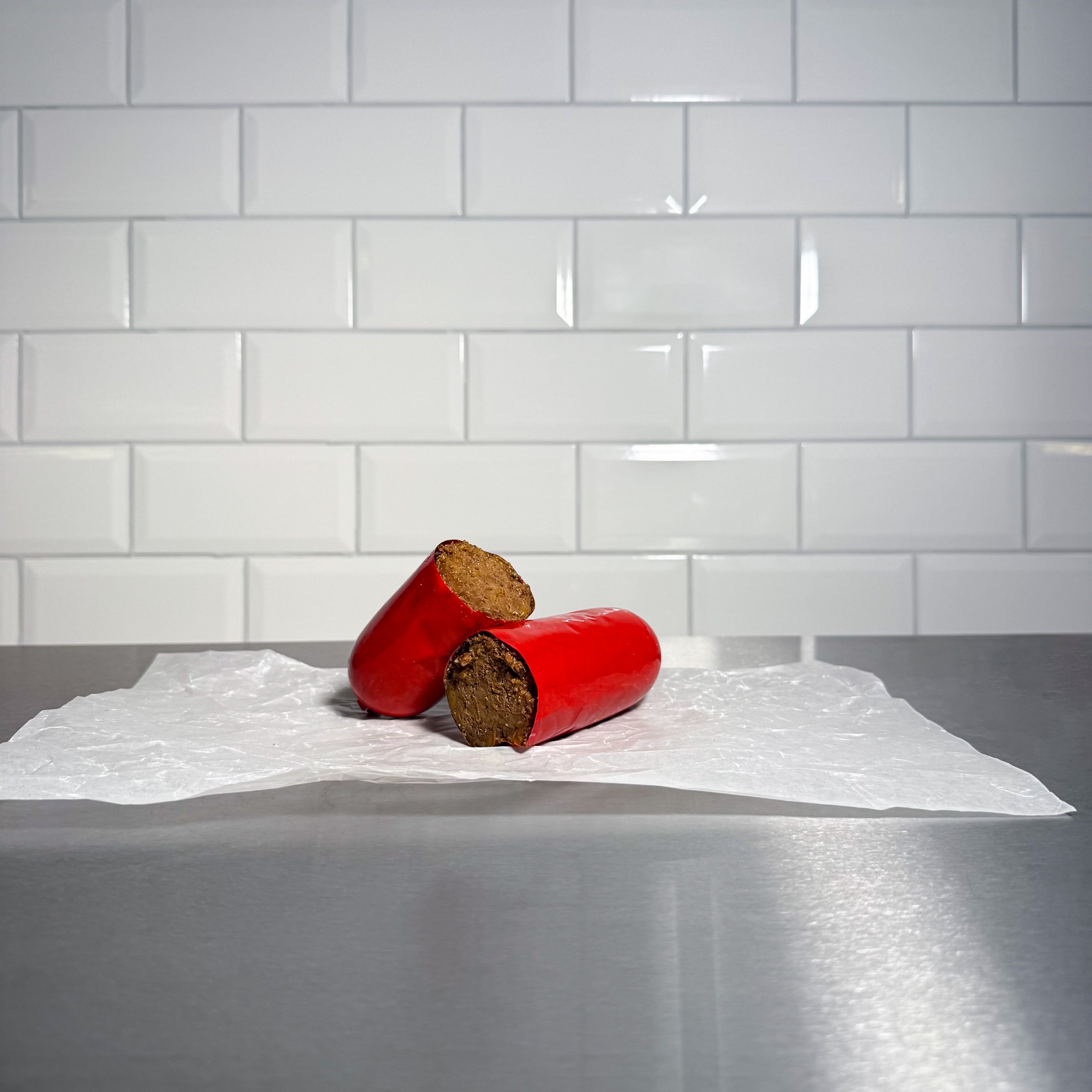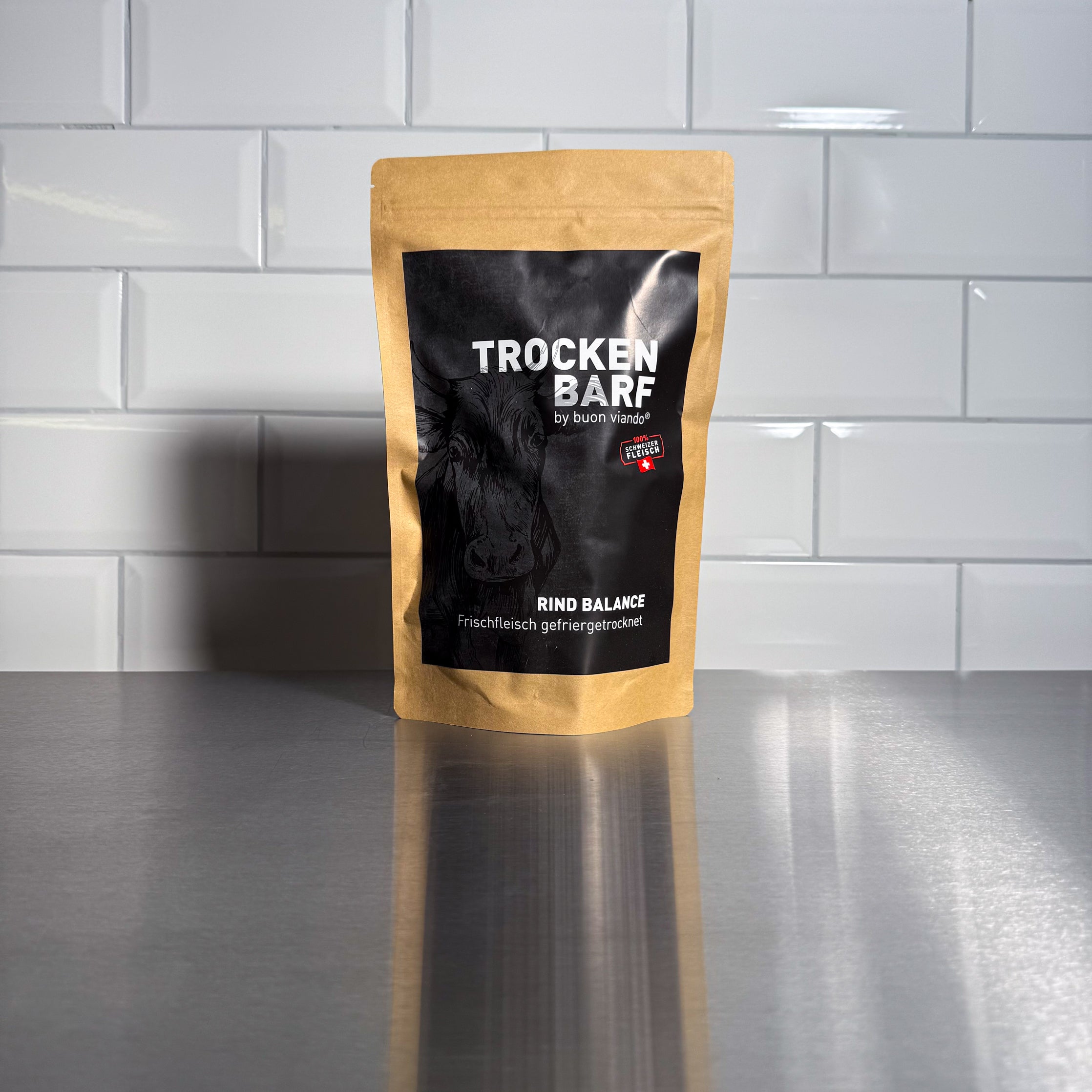Our BARF routine – This is how Buon Viando feeds!

BARFing isn't just about the right ingredients, it's also about the best method for preparing food efficiently. Some people like it spontaneously, others prefer a well-planned diet – here we present three different methods that have proven successful in everyday life. Perhaps you recognize yourself in one of them?
Method 1: Naomi the Boss – The Quick BARF Mix
Naomi is a woman of efficiency. Her Golden Doodle, Lilly (8 kg), gets her daily meal in a wonderfully uncomplicated way: The perfectly portioned Balance sausage thaws overnight in the refrigerator so it's ready to hand in the morning. This is accompanied by a homemade vegetable or fruit smoothie, which Naomi prepares once a week. Then all you have to do is take the sausage out of the refrigerator, add the vegetable puree, add the desired additions, stir once – and the menu for the day is ready!
Here, too, planning is half the battle! As soon as the new order arrives, Naomi portions the sausages into appropriate quantities and freezes them again – so she doesn't have to think long in the morning.
When traveling, the sterilized Balance sausages simply land in her luggage, and Lilly stays well-fed even on the go.
Method 2: Structure Queen Christel – Prepare once, benefit for weeks
Christel is the planner among raw feeders. Her two huskies, Duke (35 kg) and Amelka (18 kg) love their meals – and Christel loves to be well-organized. That's why she takes a few hours once a month to fill 36 food containers according to plan. Meat, vegetables, supplements – the individual components are weighed and portioned in Tupperware and placed in the freezer. In the morning, she only has to take out a finished portion and place the next container in the refrigerator to thaw.
This method has a clear advantage: One effort, then weeks of peace of mind! No calculations, no daily preparations – everything is perfectly planned. And for vacation? No problem! If she's staying in a vacation apartment with a freezer compartment, she brings the prepared containers along. For longer trips, she relies on dry BARF or sterilized sausages – flexible, practical, and always fresh!
Method 3: Jill, a Fresh Meat grouch – The Practical BARF Alternative
Jill loves simplicity and flexibility – but using raw meat? That's not her thing. Nevertheless, she wants to offer her little Polonka, Polly (4 kg), only the best. Her compromise: sterilized BARF sausages or dry BARF.
In the morning, she simply puts the required amount of meat into the bowl. With the sterilized sausages, she adds the necessary ingredients, while with the dry BARF, she adds the required vegetables. Here, too, she makes things easy for herself and reaches for the ready-made vegetable and berry flakes.
The best part? She doesn't have to change anything when traveling! Polly continues to receive high-quality food, and if Jill does get over it, she gets a natural snack for a change – like a chicken neck or a Schlesinger Schnitzel. This way, the diet remains species-appropriate without Jill having to deal with raw meat every day.
And how do you BARF?
Whether you're a talented planner, a spontaneous feeder, or a meat-hater – the possibilities with BARF are endless. Over time, everyone develops their own routine that fits their daily routine. Which method appeals to you most? Or do you have your own unique approach?
Do you have questions about one of our methods? Feel free to get in touch – we'd love to share our tips and tricks with you!
Conclusion
There are different approaches to portioning and preparing BARF meals for dogs and cats. Whether preparing fresh meals daily, weekly, or storing for several weeks – each method has its advantages. The key is to ensure hygienic and nutrient-preserving preparation. If you follow these tips, you will not only make BARF feeding easier, but also ensure that your pet has a healthy and balanced diet.

